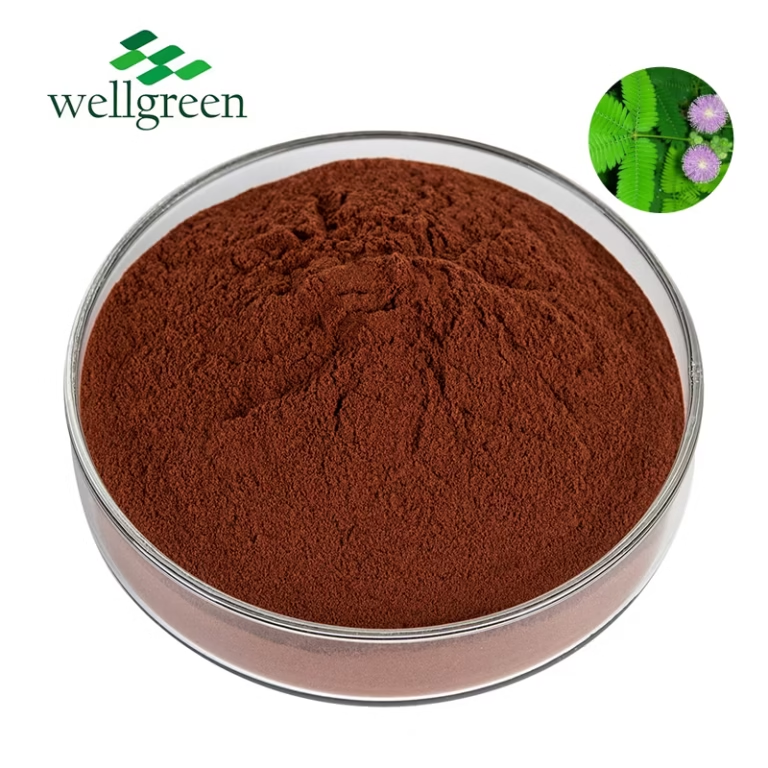Mimosa Hostilis: A Sacred Plant for Indigenous Cultures
Wiki Article

Mimosa hostilis is a venerable plant deeply ingrained in the traditions of many Indigenous cultures across South America. For centuries, it has been utilized by indigenous communities for its comprehensive spiritual and medicinal properties. The root bark, known as teonanácalli, is particularly revered for its hallucinogenic effects, believed to unveil profound experiences that facilitate transformation.
Through traditions, the plant spirit of Mimosa hostilis is invoked, guiding individuals on a quest of self-discovery and understanding with their inner selves. The knowledge concerning this sacred plant has been passed down through generations, preserving the rich cultural heritage and insights of these communities.
Exploring MHRB Extract: Unlocking Mimosa Hostilis's Potential
Mimosa hostilis, a vibrant plant indigenous to the Americas, has captured the attention of both spiritual seekers for centuries. This remarkable species harbors within its roots a potent substance known as MHRB, which has gained significant popularity in recent times.
MHRB extract is celebrated for its potential, often associated with spiritual exploration. Ancient practices suggest a long history of MHRB use in healing ceremonies.
- Scientists continue to study the pharmacological properties of MHRB, seeking to reveal its full range of effects.
- The complexities surrounding MHRB usage require responsibility. It is crucial to engage the expertise of knowledgeable individuals before engaging in any practices involving this powerful extract.
Exploring the Ethnobotanical Uses of Mimosa tenuiflora
Mimosa tenuiflori, commonly acknowledged as "sacred mimosa", holds a significant position within the ethnobotany literature of diverse communities. Its versatile properties have been harnessed for centuries in traditional medicinal practices, as well as in ceremonies. The roots of this remarkable plant possess a rich spectrum of bioactive compounds believed to exhibit medicinal effects.
From curing ailments like inflammation to promoting spiritual awareness, Mimosa tenuiflora has long been honored for its profound influence on human health.
ALook into the Chemistry and Pharmacology of Mimosa Hostilis Root Bark
Mimosa hostilis root bark has a complex chemical profile, primarily known for its abundant concentrations of alkaloids. Among these, dimethyltryptamine (copyright) and harmaline are particularly relevant. These molecules possess a range of pharmacological properties, including hallucinogenic effects. The bark furthermore other alkaloids, including alpha-harmine, which may contribute to its comprehensive pharmacological profile.
The traditional applications of Mimosa hostilis root bark encompass a spectrum of therapeutic purposes, particularly in traditional communities. However, it is crucial to understand that scientific research on the provenance of these uses remains scarce.
Tapping into the Power of copyright with Mimosa Hostilis
Mimosa hostilis, a shrub native to South America, has captured the interest of researchers and individuals alike for its potent compounds, particularly dimethyltryptamine, or copyright. copyright is a powerful psychoactive substance known for producing intense altered states of consciousness. By consuming the bark of Mimosa hostilis, one can access the realms of copyright-induced experiences. It is important to remember that copyright is a potent substance and should be treated with reverence.
- Safe use is paramount, and researching from experienced individuals or knowledgeable sources is highly recommended.
- The journey of copyright can be both transformative but also potentially intense. It is crucial to prepare both mentally and physically for the consequences that may arise.
copyright from Mimosa hostilis provides a unique opportunity to journey within the depths of consciousness, may leading to personal growth and awareness.
Ethical considerations Using Mimosa Hostilis
The utilization of Mimosa hostilis for ritualistic purposes raises a myriad of moral questions. While some argue that its cultural significance warrants respect and tolerance, others caution its use due to potential unforeseen consequences. It's crucial to evaluate this complex issue with sensitivity, taking into account the social contexts and potential implications. A nuanced perspective is essential for navigating the ethical nuances surrounding Mimosa hostilis.
Cultivating Mimosa Hostilis: A Guide for Growers
Embarking on the journey of cultivating Mimosa Hostilis can be a rewarding experience for the dedicated grower. This enchanting plant, native to tropical regions of the Americas, has earned significant recognition in recent years due to its unique properties. Before your cultivation mission, it is crucial to grasp the specific parameters this plant demands to thrive.
- Providing adequate sunlight is paramount for healthy Mimosa Hostilis growth. These plants thrive in unfiltered sunlight, ideally receiving a minimum of ten hours per day.
- Preserving well-drained soil is essential to prevent root rot, a common ailment that can destroy your plants. A mixture of loamy soil with decomposed matter is perfect.
- Consistent watering is necessary, but be mindful not to overwater your Mimosa Hostilis. Allow the top inch of soil to dehydrate before providing another watering.
The Shamanic Traditions Surrounding Mimosa Hostilis
Deep within the ancient forests of South America, the rituals of transformation have been practiced for generations. Among these powerful allies is Mimosa Hostilis, a mysterious plant revered by the shamanistic traditions of indigenous peoples. It contains within its bark a river of knowledge, guiding spirits on their journeys into the unseen.
The medicine men understand that Mimosa Hostilis is not simply a check here medicinal agent; it is a portal between realms, connecting us to the powerful energies that flow through all of creation.
Confronting Legal Challenges with Mimosa Hostilis
The legal status of mimosa hostilis differs significantly from one location to another. It means that the permissibility of possessing, using, or growing this plant depends on your particular geographic location.
Furthermore, laws and regulations concerning mimosa hostilis are constantly changing. It is therefore essential that you carefully research the current legal framework in your area.
- Seeking advice from a legal professional who specializes in cannabis laws is highly recommended.
- Remaining informed about any amendments to the law can help you stay clear of any potential legal difficulties.
Mimosa Hostilis and Spiritual Exploration: A Journey Inward deepening
The ancient wisdom whispered through the rustling leaves of Mimosa Hostilis calls to voyagers on a inner quest. Embarking upon this path is to unleash hidden dimensions within, where the veil between worlds thinns. It's a powerful experience that illuminates the soul, revealing truths latent beneath the surface. As you merge with the essence of this sacred plant, be prepared for insights that shift your perception.
- Accept the unknown with an open heart and a eager mind.
- Surrender all expectations and allow yourself to be swept away by the rhythm.
- Remember, this is a quest of self-discovery. Believe in your own inner compass.
The wisdom gained through Mimosa Hostilis resonates long after the experience has faded. It is a gift that can change your life in profound and permanent ways.
Understanding the Challenges and Advantages of Mimosa Hostilis
Mimosa hostilis is a plant native to South America, gaining increasing attention for its potential pharmacological properties. While it contains valuable compounds like copyright, responsible for its psychoactive effects, it's crucial to approach this plant with respect. Understanding both the potential downsides and the benefits of Mimosa hostilis is essential for safe and informed use. Potential risks can include physical reactions, emphasizing the need for thorough research, responsible consumption, and a secure environment.
- It's important to consult with a healthcare professional before using Mimosa hostilis or any products derived from it.
- Proper dosage is crucial to minimize potential side effects.
- Be aware of the regulations surrounding Mimosa hostilis in your locality.
- Always prioritize safety and well-being when exploring the use of this plant.
 Report this wiki page
Report this wiki page